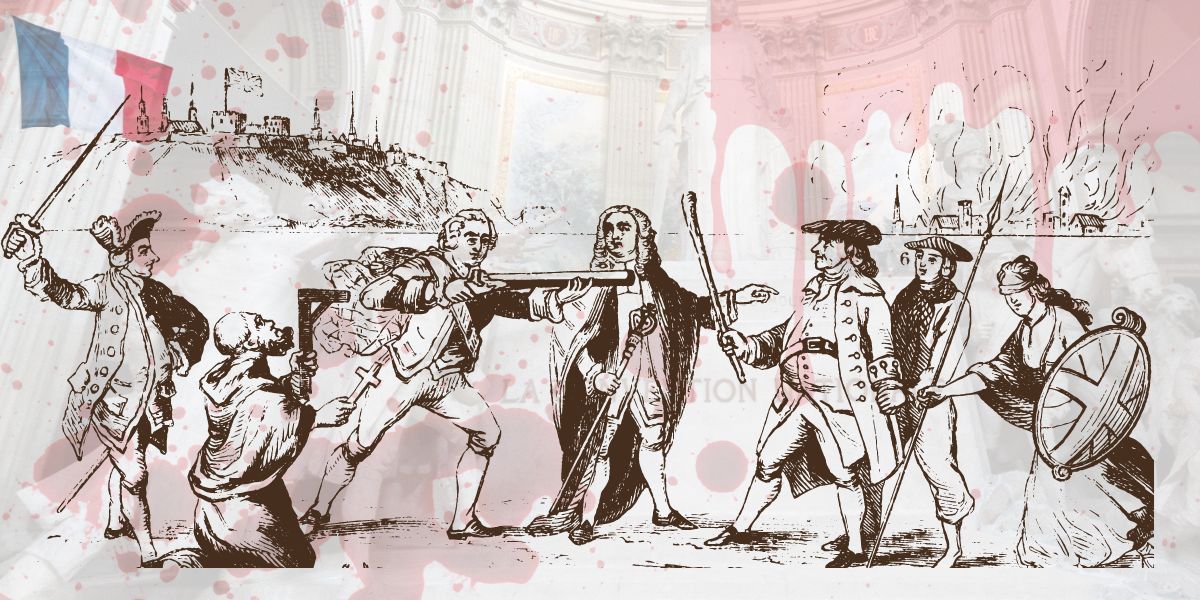Introduction
The French Revolution, which began in 1789 and lasted until 1794, was a key moment in European history. It marked the end of the Royals Bourbon monarchy and the birth of present-day France. The rebellion was driven by a combination of social, political, and economic factors, and had a profound impact not only on France but also on the entire world. In this article, we will explore why and how the Revolution in France started and discuss the key figures who led it.
Pre-Revolutionary France
Before the revolution, France was an absolute royal monarchy under King Louis XVI. French society was broken down into three tiers: the clergy(priesthood), the nobility, and the commoners. Around 98 % of the population belonged to the third Estate including laborers, artisans, servants, and common people who faced heavy taxation and limited political representation. However, the privileged First and Second Estates enjoyed significant economic and political advantages, while the Third Estate faced numerous hardships and inequality.
The entire nation suffered from a severe financial, political, and management crisis in the years leading up to the French revolution. The monarchy`s expenses, costly wars, and an inefficient taxation system had pushed the country into deep debt. The heavy tax burden fell disproportionately on the Third Estate, increasing their hardship, dissatisfaction, and sorrow. King Louis XVI attempted to address the crisis through fiscal reforms but was met with resistance from the nobility leading to public frustration.
Meeting of Estate Generals
In 1789, King Louis XVI convened the Estates-General in an attempt to address the financial crisis. The Estates-General was the council representing the three estates. However, the Third Estate, dissatisfied with the unequal representation and lack of power, declared themselves the National Assembly and pledged to draft a French Constitution, to ensure representation for all citizens.
Storming of the Bastille
The tensions between the monarchy and the people escalated on July 14, 1789, when a mob of revolutionaries stormed the Bastille, seeking to obtain weapons and release political prisoners. It was a royal fortress and prison in Paris, seen as a symbol of royal authority. This event, known as the Storming of the Bastille, symbolized the people’s anger towards the monarchy and became a catalyst for the French Republic Movement.
Reign of Terror (Sept. 5, 1793, and July 27, 1794)
From 1793 to 1794, France experienced a period known as the Reign of Terror, pursuing the establishment of the First Republic. Maximilien Robespierre, a prominent revolutionary leader played a significant role during this phase and took control of the government. The Committee of Public Safety, headed by Robespierre, initiated a campaign of mass executions and repression to eliminate perceived enemies of the violence. The Reign of Terror aimed to protect the innovation from counter-revolutionary forces and maintain internal stability.
The Rise of Napoleon Bonaparte
In the middle of this revolution, a military officer named Napoleon Bonaparte emerged as a powerful figure. He successfully rose through the ranks and eventually seized power, establishing himself as the First Consul in 1799 and later the Emperor of his country. Napoleon brought stability to France and led military campaigns both defending France against external threats and expanding its territory through conquests. but also expanded his empire through military conquests across Europe.
Conclusion
The transformation in France was a compound and diverse event that had a lasting impact on France & the entire world. This marked the end of the feudal system and the rise of modern political ideologies such as liberalism, nationalism, and socialism. Additionally, it brought about significant changes in the country and set the stage for the rise of modern democratic ideals. The French revolution leaders, including Maximilien Robespierre and Napoleon Bonaparte, inspired generations to fight for liberty and equality.
You can read more about origin, causes and timeline of this revolution.
